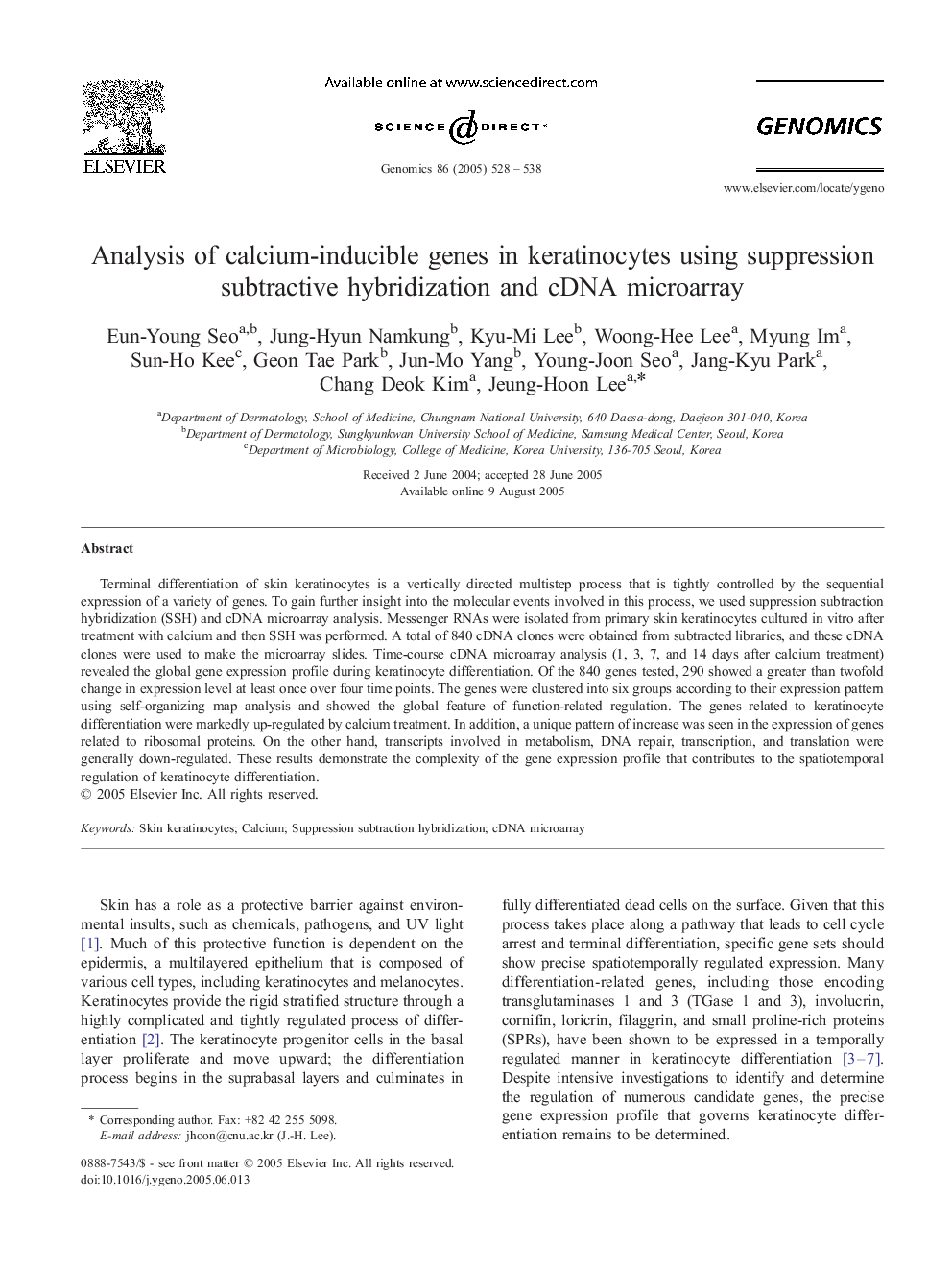| Article ID | Journal | Published Year | Pages | File Type |
|---|---|---|---|---|
| 9132057 | Genomics | 2005 | 11 Pages |
Abstract
Terminal differentiation of skin keratinocytes is a vertically directed multistep process that is tightly controlled by the sequential expression of a variety of genes. To gain further insight into the molecular events involved in this process, we used suppression subtraction hybridization (SSH) and cDNA microarray analysis. Messenger RNAs were isolated from primary skin keratinocytes cultured in vitro after treatment with calcium and then SSH was performed. A total of 840 cDNA clones were obtained from subtracted libraries, and these cDNA clones were used to make the microarray slides. Time-course cDNA microarray analysis (1, 3, 7, and 14 days after calcium treatment) revealed the global gene expression profile during keratinocyte differentiation. Of the 840 genes tested, 290 showed a greater than twofold change in expression level at least once over four time points. The genes were clustered into six groups according to their expression pattern using self-organizing map analysis and showed the global feature of function-related regulation. The genes related to keratinocyte differentiation were markedly up-regulated by calcium treatment. In addition, a unique pattern of increase was seen in the expression of genes related to ribosomal proteins. On the other hand, transcripts involved in metabolism, DNA repair, transcription, and translation were generally down-regulated. These results demonstrate the complexity of the gene expression profile that contributes to the spatiotemporal regulation of keratinocyte differentiation.
Related Topics
Life Sciences
Biochemistry, Genetics and Molecular Biology
Genetics
Authors
Eun-Young Seo, Jung-Hyun Namkung, Kyu-Mi Lee, Woong-Hee Lee, Myung Im, Sun-Ho Kee, Geon Tae Park, Jun-Mo Yang, Young-Joon Seo, Jang-Kyu Park, Chang Deok Kim, Jeung-Hoon Lee,
